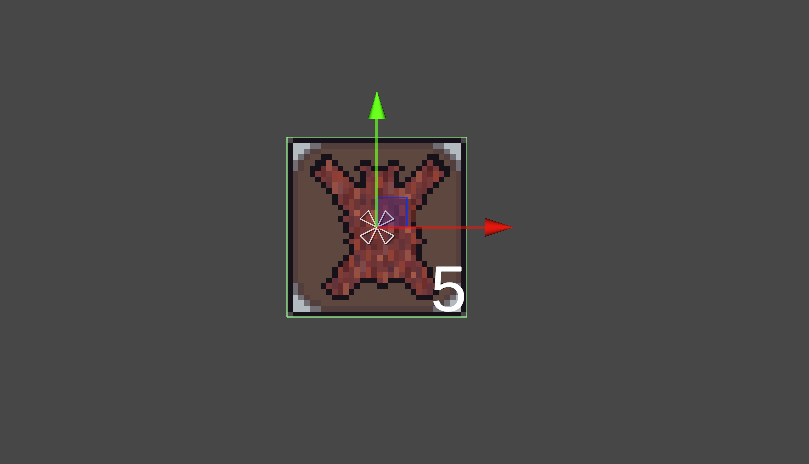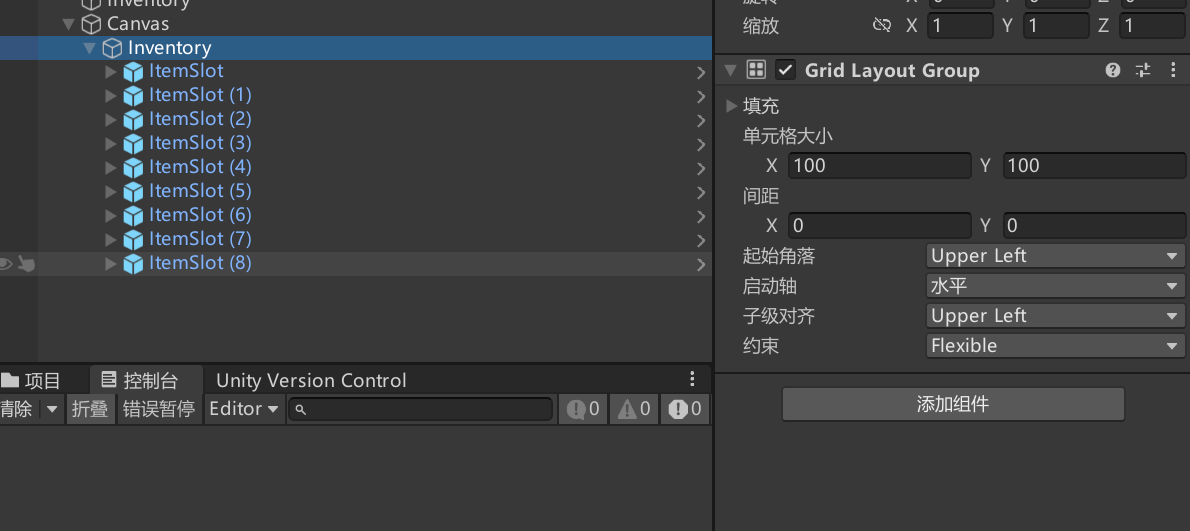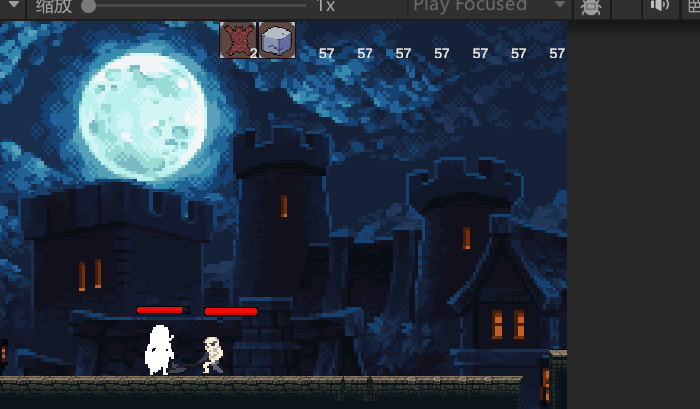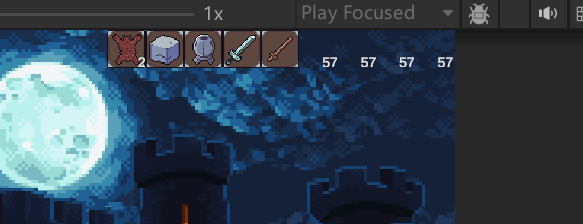1.创建物品槽
ItemObject脚本:
private void OnValidate()//这个函数可以在非运行状态更改对象的属性
{
GetComponent<SpriteRenderer>().sprite=itemData.icon;//直接可以看到物品的图标
gameObject.name ="Item Object -"+itemData.ItemName;//修改名字
}

创建一个画布,在画布下再建一个图像UI,在图像UI下创建一个文本UI,设置文本在图像的右下角,且偏右显示
创建UI_ItemSlot脚本挂载在图像UI上:
**[SerializeField] private Image image;//图像和文本
SerializeField\] private TextMeshProUGUI textMeshPro;** **public InventoryItem Item;//物品数据 void Start() { if(Item != null)//初始化图像和数量 { image.sprite = Item.data.icon; }** **if(Item.stackSize\>1) { textMeshPro.text =Item.stackSize.ToString(); }** **else { textMeshPro.text = " "; } }**  ## 2.实现背包里存放物品并排序显示 ### UI_ItemSlot脚本: **public void UpdataSlot(InventoryItem _newItem)//传入物品类 { Item = _newItem;** **image.color = Color.white;//没有物品时槽是透明的** **if (Item != null) { image.sprite = Item.data.icon; }** **if (Item.stackSize \> 1) { textMeshPro.text = Item.stackSize.ToString(); }** **else { textMeshPro.text = " "; } }** ### Inventory脚本:  为所有物品槽创建一个父对象,并给它挂载Gird layout Group组件,它可以自然分配子物体的位置 **\[Header("Inventory UI")
SerializeField\] private Transform InventorySlotParent;//槽位的父对象 private UI_ItemSlot\[\] itemSlot;//物品槽的数组** **private void UpdataSlotUI()//在添加和减少的函数里调用 { for (int i = 0; i \< inventoryItems.Count; i++)//检查列表所有物品类 {** **itemSlot\[i\].UpdataSlot(inventoryItems\[i\]);** **} }**  ## 3.实现装备类的物品数据 ### ItemData脚本: **public enum ItemType//第一个分类------材料与装备 { Material, Equipment }** ### 创建ItemData_Equipment脚本: **public enum EquiomentType //装备的分类------武器,护甲,饰品和药水 { Weapon, Armor, Amulet, Flask }** **\[CreateAssetMenu(fileName = "New Item Data", menuName = "Data/Equipment")
public class ItemData_Equipment : ItemData
{
public EquiomentType equipmentType;
}**
利用上述脚本创建几个物品

4.实现分类存储
将装备和材料分开存储
Inventory脚本:
[SerializeField] public List<InventoryItem> stash;//仿照之前的方法重写一遍即可
public Dictionary<ItemData,InventoryItem> stashItemsDictionary;
[SerializeField] private Transform stashSlotParent;
private UI_ItemSlot[] stashSlot;
private void UpdataSlotUI()
{
for (int i = 0; i < inventory.Count; i++)
{
itemSlot[i].UpdataSlot(inventory[i]);
}
for(int i = 0;i< stash.Count;i++)//更新材料的存储
{
stashSlot[i].UpdataSlot(stash[i]);
}
}
public void AddItem(ItemData _item)
{
if (_item.itemType == ItemType.Equipment)
{
AddToInventory(_item);
}
else if( _item.itemType == ItemType.Material)
{
AddToStash(_item);//添加方法与之前类似,这里不作赘述
}
UpdataSlotUI();
}
public void RemoveItem(ItemData _item)//移除同理
{
if (_item.itemType == ItemType.Equipment)
{
RemoveInventory(_item);
}
else if( _item.itemType == ItemType.Material)
{
RemoveStash(_item);
}
UpdataSlotUI();
}
只需要再创建一个槽位的父对象即可
